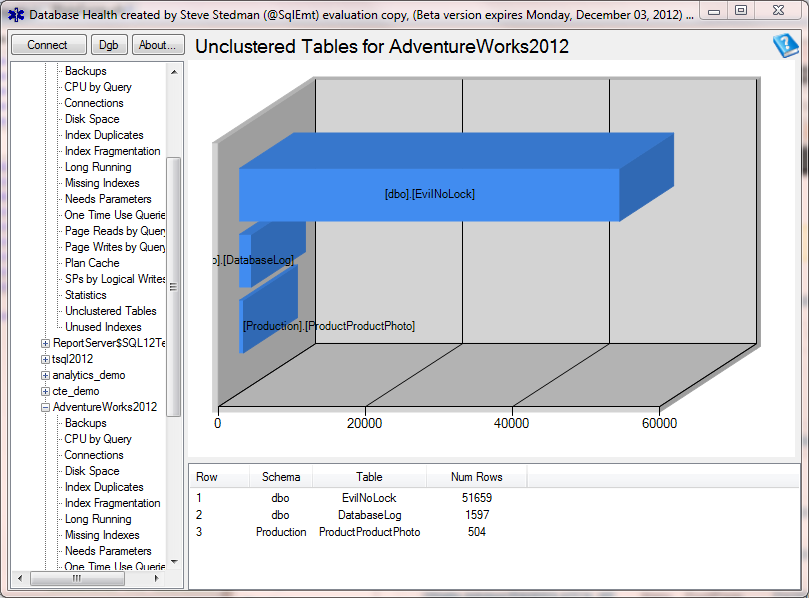Unclustered Tables
The Unclustered Tables report shows you tables that do not have a clustered index.
Enroll Today!


Steve and the team at Stedman Solutions are here for all your SQL Server needs.
Contact us today for your free 30 minute consultation..
We are ready to help!

 Download this page in PDF format
Download this page in PDF format
Leave a Reply